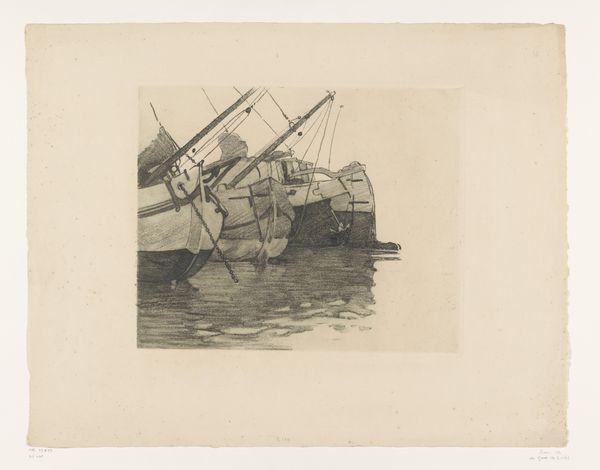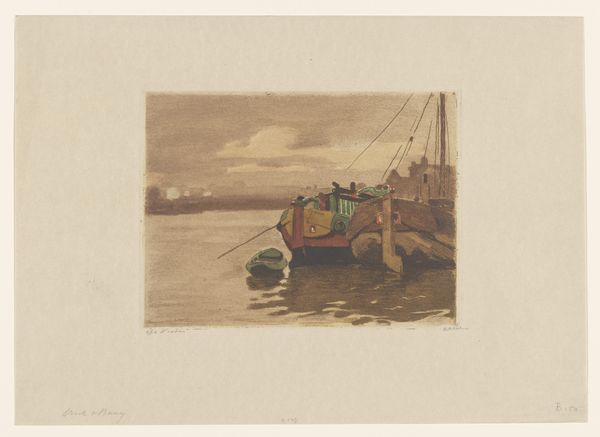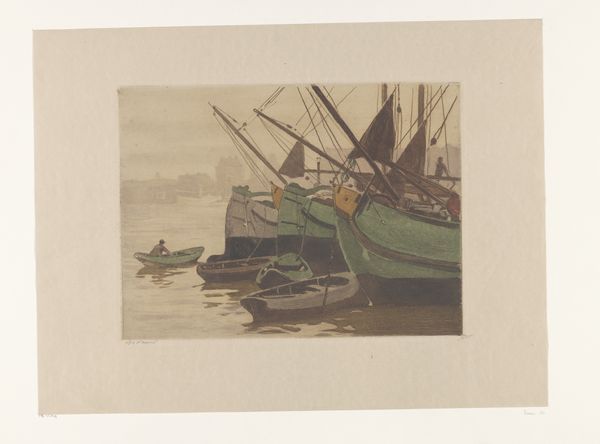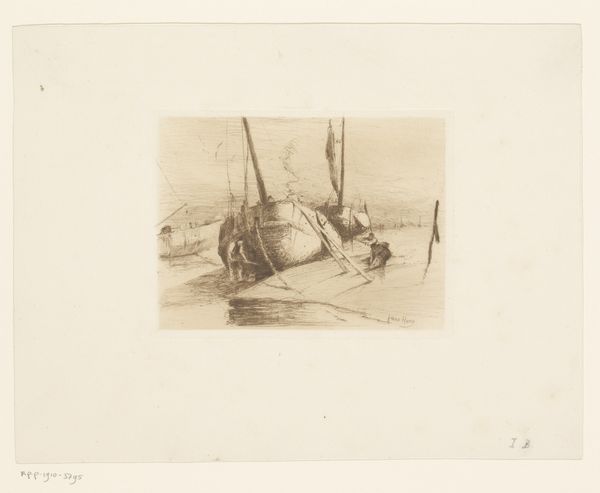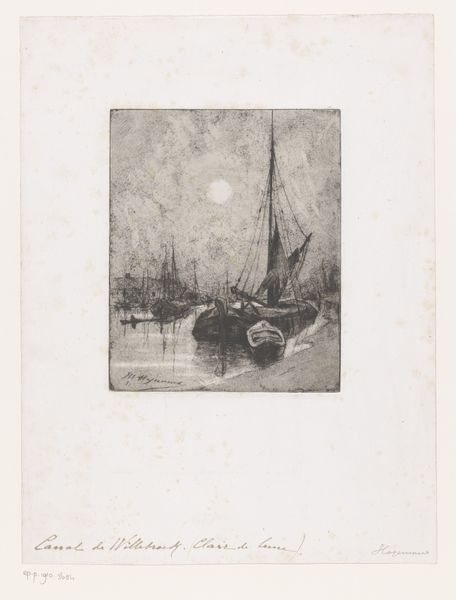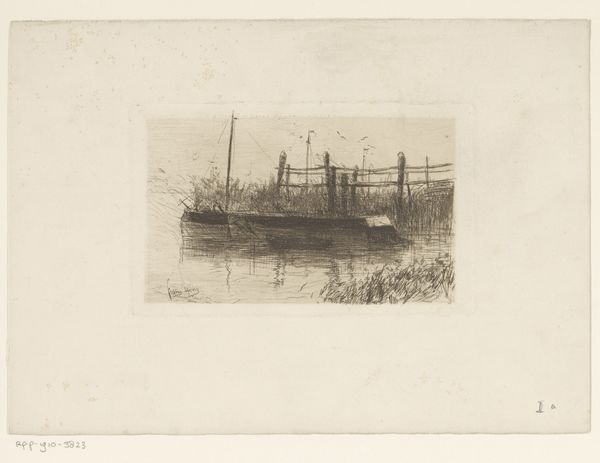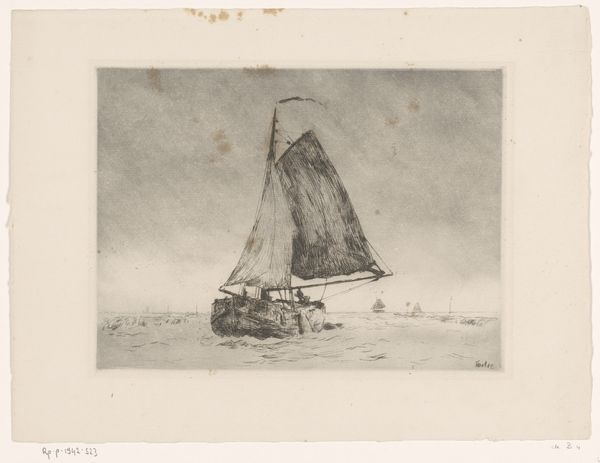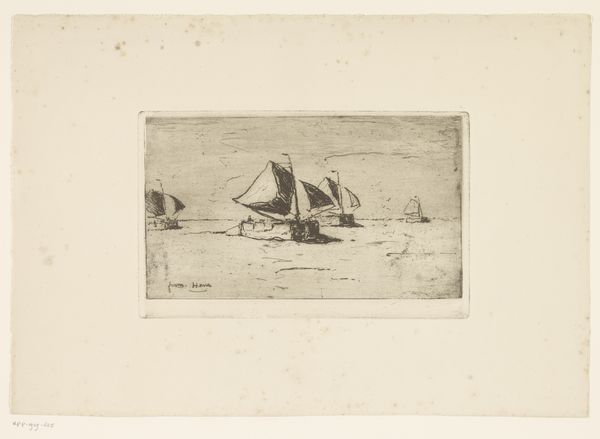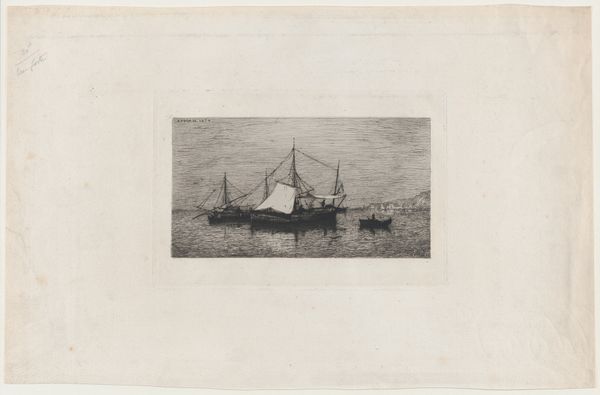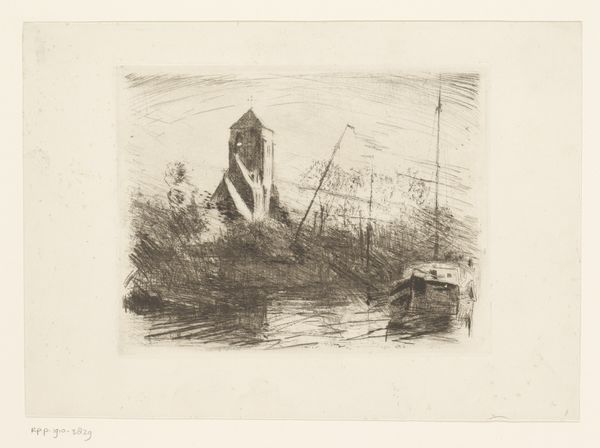
Dimensions: height 327 mm, width 399 mm
Copyright: Rijks Museum: Open Domain
Curator: This is "Turfschepen in het IJ," or "Peat Barges in the IJ," by Willem Witsen, created around 1910 to 1911. He captures this industrial scene in etching and watercolor. What strikes you first about it? Editor: Immediately, it's the stillness. Despite knowing these are working boats, laden with peat, there's a muted, almost melancholy feel. The palette is so restrained. Curator: Absolutely, there’s a poetic quality woven into the industrial landscape. Peat barges were crucial for the Dutch economy. Editor: They speak to the everyday realities of labour, you know, the grit and grime. Etching seems so appropriate for the subject matter; that laborious process for transporting such weighty materials. Curator: Precisely. And Witsen wasn’t just documenting; he came from a well-to-do family. His focus, especially rendered with watercolor's delicacy, almost elevates the everyday. There is a sort of grace there. Editor: Interesting! I see the craft inherent in moving peat. It's not just about exploitation or some grim depiction. Witsen chooses a perspective that celebrates the materials involved: from the barge's construction to the peaty cargo it bears. He's interested in the labour that produces the city's resources and that speaks to a growing awareness of urban processes. Curator: Yes, there’s a dignity. It’s more contemplative than a celebration. This piece is an artifact too, speaking to both human labor, and human ingenuity—the act of capturing the boats here, now, forever in a new form. Editor: Well said. The materiality of work made permanent. This resonates in a way beyond pretty boats bobbing in the water. Curator: It adds another layer to our understanding. So, looking back now, it speaks of those days gone by, yet echoes in our present-day dialogues about our own industries. Editor: Absolutely. This makes me appreciate the subtle tension captured within the muted hues; the work inherent and the way Witsen's rendering is both homage and document.
Comments
No comments
Be the first to comment and join the conversation on the ultimate creative platform.
